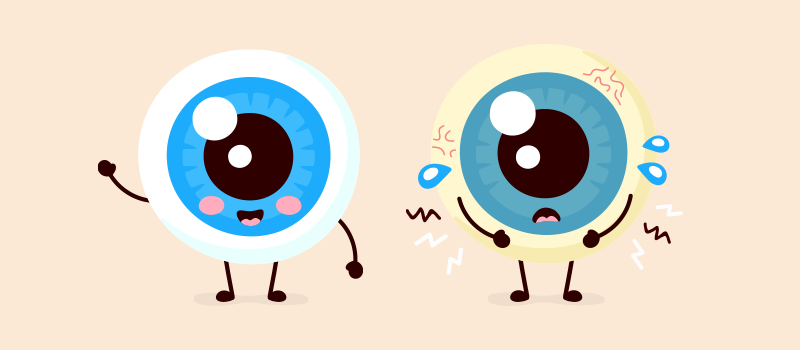What’s the Buzz
The Bee Healthy Blog
What is Macular Degeneration?

Macular degeneration is the leading cause of vision loss, affecting over 10 million Americans—more than the number of those suffering from cataracts and glaucoma combined[1]. Macular degeneration is most common in adults 55 and over, but there’s still a chance that younger adults can develop this incurable eye disease—here’s everything you should know.
Macular degeneration is caused by the deterioration of the central portion of the retina, the inside back layer of the eye that records the images we see and sends them via the optic nerve from the eye to the brain. The retina’s central portion, known as the macula, is responsible for focusing central vision in the eye, and it controls our ability to read, drive a car, recognize faces or colors, and see objects in fine detail[1].
Types of Macular Degeneration
There are two different types of macular degeneration –“dry” (atrophic) and “wet” (exudative).
Dry macular degeneration: Accounts for 85% to 95% of cases, and does not involve any leakage of blood or serum. Some people have only mild central vision loss, while in others it can be more severe[2].
Wet macular degeneration: Generally caused by abnormal blood vessels that leak fluid or blood into the macula. Wet macular degeneration typically starts off as dry, but symptoms usually appear suddenly and worsen rapidly. These may include: visual distortions, reduced central vision, difficulty recognizing faces, increased blurriness of printed words, and difficulty adjusting to low light levels[3].
Risk Factors of Age-Related Macular Degeneration (AMD)
The biggest risk factor for macular degeneration is age. As age increases, risk for this disease increases–mostly affecting those over the age of 55. Other risk factors include genetics (people with a family history of AMD are at higher risk) and race (Caucasians are more likely to develop the disease than African Americans or Hispanics/Latinos. Smoking is also a big risk factor—those who smoke increase their chances of developing macular degeneration by nearly double[1].
Stages of Macular Degeneration
Macular degeneration is broken down into three stages, as follows:
- Early AMD: Most people do not experience vision loss in the early stage of AMD, which is why regular eye exams are important, particularly if you have more than one risk factor. Early AMD is diagnosed by the presence of medium-sized drusen (yellow deposits beneath the retina).
- Intermediate AMD: At this stage, there may be some vision loss, but there still may not be noticeable symptoms. A comprehensive eye exam with specific tests will look for larger drusen and/or pigment changes in the retina.
- Late AMD: At this stage, vision loss has become noticeable.
Treatment
There is currently no cure for AMD, but there are ways to decrease your risk and slow the progression once you’ve been diagnosed. Lifestyle changes such as eating a healthy diet, exercising, avoiding smoking, and protecting your eyes from ultraviolet light can help prevent/ slow down vision loss.
It’s important to get regular eye exams, especially if you’re over the age of 55 and experiencing any of the following symptoms: changes in your central vision and/or your ability to see color and fine details becomes impaired.
[1] https://www.macular.org/what-macular-degeneration
[2] https://www.mayoclinic.org/diseases-conditions/dry-macular-degeneration/symptoms-causes/syc-20350375
[3] https://www.mayoclinic.org/diseases-conditions/wet-macular-degeneration/symptoms-causes/syc-20351107











SOCIAL